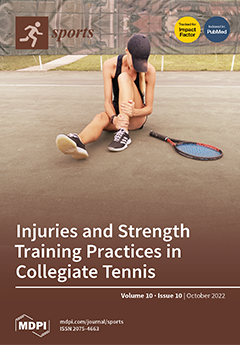The current investigation aimed to understand the differing positional demands across two elite rugby union competitions, with special reference to high-intensity effort (HIE) and repeated high-intensity effort (RHIE) activity. Four hundred and forty-one (
n = 441) individual game files from thirty-five competitive games from the European Rugby Champions Cup (tier 1;
n = 8) and PRO12 League (tier 2;
n = 24) were analysed. Players’ locomotor profiles were recorded using wearable global positioning system microtechnology (10 Hz Catapult S5, Catapult Innovations, Australia). Locomotor activities were classified as running (≥4.4 m∙s
−1), high-speed running (≥5.5 m∙s
−1), accelerations (≥2 m∙s
−2) and decelerations (≤−2 m∙s
−2). Data was gathered on collisions (≥4 g
−1), high-intensity efforts (HIE), repeated high-intensity efforts (RHIE), average number of efforts within a RHIE bout (
n) and maximal number of efforts within a RHIE bout (
n). Overall locomotor differences between competitions were trivial to small in nature, with tier 1 competition associated with a larger number of RHIE bouts (6.5 ± 1.4 vs. 5.7 ± 1.5, effect size,
ES = 0.55) and efforts per bout (3.0 ± 1.1 vs. 2.4 ± 1.2,
ES = 0.52). Collisions comprised a greater proportion of total HIE for forwards within tier 1 competition compared to tier 2 competition. The hooker (mean difference: 4 [−10 to 14];
ES = 0.30, small), lock (mean difference: 5 [−12 to 23];
ES = 0.36, small) and backrow (mean difference: 8 [−10 to 15];
ES = 0.54, small) positions engaged in more collisions during tier 1 competition compared to tier 2 competition. These findings can be used by athletic performance staff to design game-specific drills and recovery strategies during different competition weeks to ensure players are appropriately prepared for the differing demands of elite rugby competition.
Full article






